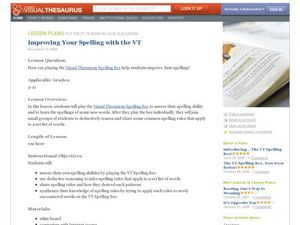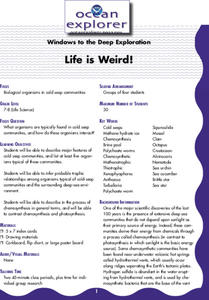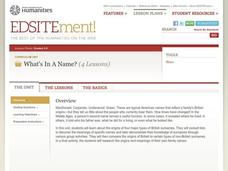Curated OER
Definition and Applications of Computational Science
Students participate in a variety of instructional experiences about Computer Science. They define Computational Science and describe computational simulation. They also compare and contrast Computational Science and Computer Science.
Curated OER
Landscape Confection
Young scholars engage in a activity about the creation of landscape paintings. This activity is meant to be done before visiting a museum. They examine the works of art in order to become familiar with the style and recreate them. Then...
Curated OER
Let's Get To the Core!
Students practice analyzing ice core samples to discover climate changes. Using the samples, they identify and graph the gas amounts. They use these numbers to determine their effect on global warming. In pairs, they complete a...
Curated OER
Calculus
Students make an inquiry with the aid of technology into the concept of functions. The emphasis of the lesson is on the interplay between the geometric and analytic information.
Curated OER
FAT FOLLIES
Young scholars, testing various foods for fat content by rubbing food samples on paper. Students identify what and who the US Food and Drug Administration is in reference to the Food Pyramid. Young scholars write the name of each food...
Curated OER
Organization of the Elements and Periodic Table
Pupils identify how to relate the position of an element in the periodic table to its atomic number and atomic mass. They also identify and interpret how to use the periodic table to identify metals, semimetals, nonmetals, and halogens....
Curated OER
What Do Genes Look Like?
Seventh graders describe the basic structure of the DNA molecule. They identify what an inherited trait is and how it can be determined by one or more genes. Finally, 7th graders identify that plant and animal cells contain several...
Curated OER
Law of Superposition
Students identify the law of superposition and it states that beds of rock in a series are laid down with the oldest at the bottom and younger layers on the top. They construct a legen for a block diagram and construct a block diagram...
Curated OER
Music: Elgar (1962)
Students examine how the creation and performance of music is affected by contextual influences. They specifically examine anthems and discuss the elements that contribute to that musical genre and how the nature of a piece of music may...
Curated OER
Retrograde Motion
Students study the motions of the heavenly bodies. In this space lesson students use models to show a variety of schemes explaining the motions.
Curated OER
Pendulum Problems
Ninth graders explore how pendulums function. In this pendulums instructional activity students complete a pendulum lab activity.
Curated OER
MEASURING THE GRAVITATIONAL CONSTANT, G
Students study gravitational force an. In this gravitational force lesson students observe a demonstration.
Curated OER
Improving Your Spelling with the Virtual Thesaurus
Students study spelling words. In this word study lesson plan, students use the Visual Thesaurus and play the Visual Thesaurus Spelling Bee.
Curated OER
Kinematics of the Planar Continuum Snake Robot
Students calculate the length of an arc that surrounds an angle at the center of a circle of radius. In this kinetic equations instructional activity students complete a lab and solve a kinematic equation.
Curated OER
SBRR Strategies to Teach Vocabulary
First graders explore reading comprehension by reading Curious George books in class. In this vocabulary expansion lesson, 1st graders read the book Curious George Takes a Job and analyze the easy vocabulary terms as well as "tier 2"...
Curated OER
Fun with Phylogenetic Trees
Tenth graders differentiate angiosperms and gymnosperms. In this biology lesson, 10th graders construct a musical phylogenetic tree from information they gathered on resource websites. They present their project in class.
Curated OER
Life is Weird!
Students describe major features of cold seep communities, and list at least five organisms typical of these communities. They infer probable trophic relationships among organisms typical of cold-seep communities and the surrounding...
Curated OER
Finding Historical Motifs in Today's Furniture
Pupils observe and explain continuity with the past in contemporary furniture design.
Curated OER
What Is In a Name?
Young scholars explore the origins of four major types of British surnames. They consult lists to discover the meanings of specific names and later demonstrate their knowledge of surnames through various group activities.
TeachEngineering
Teach Engineering: What Do Bread and Beer Have in Common?
Young scholars are presented with information that will allow them to recognize that yeasts are unicellular organisms that are useful to humans. In fact, their usefulness is derived from the contrast between the way yeast cells and human...
TeachEngineering
Teach Engineering: A Lego Introduction to Graphing
Students use a LEGO ball shooter to demonstrate and analyze the motion of a projectile through use of a line graph. This activity involves using a method of data organization and trend observation with respect to dynamic experimentation...




















